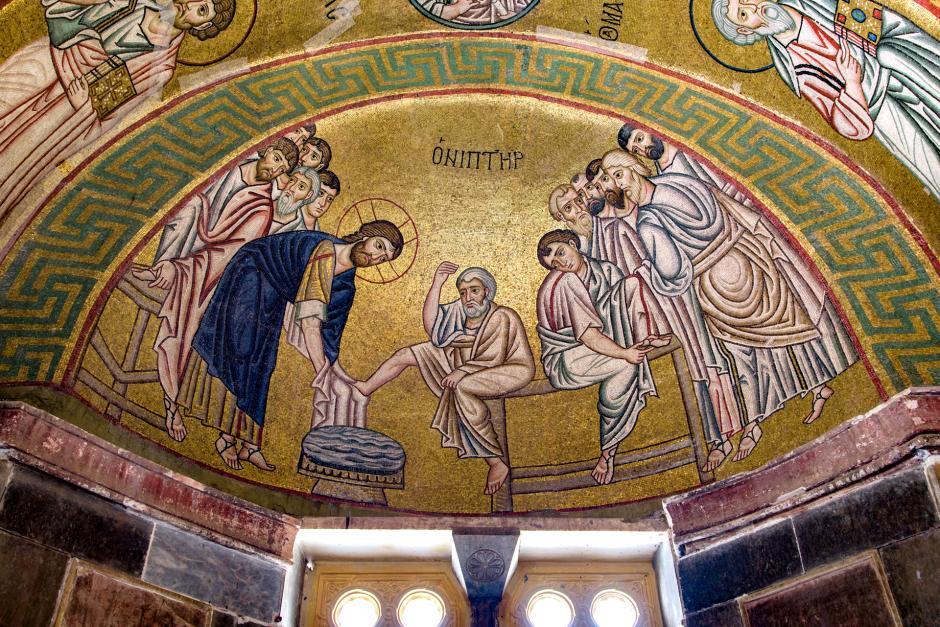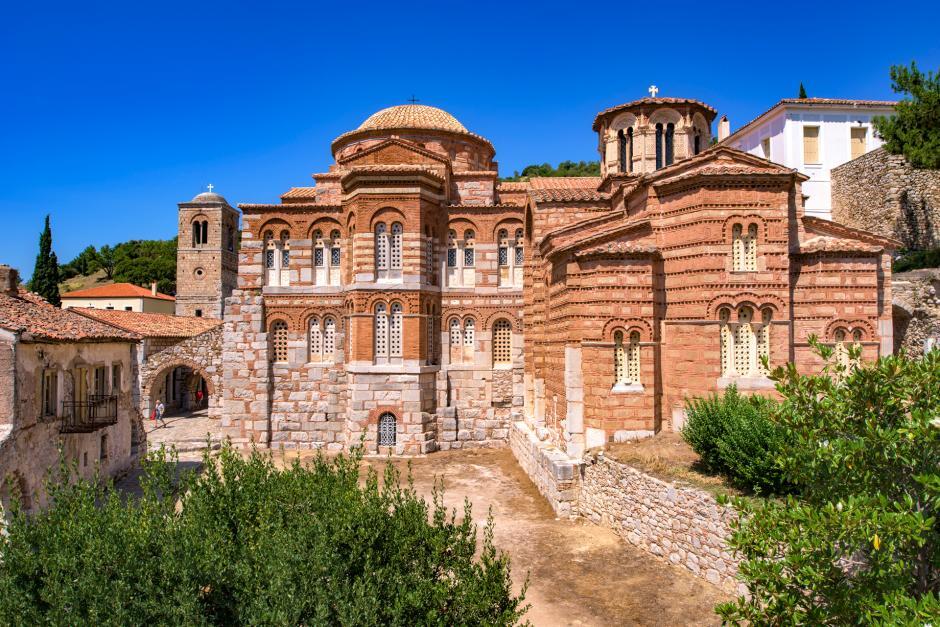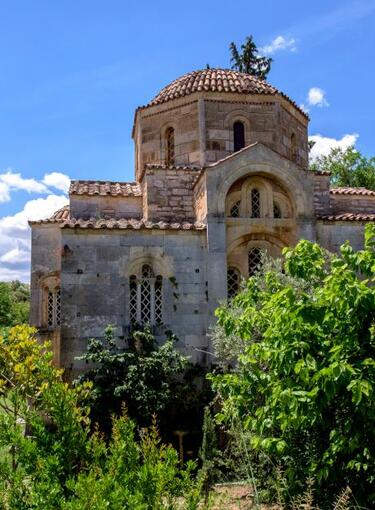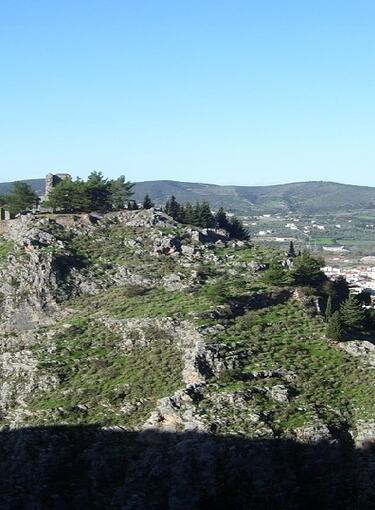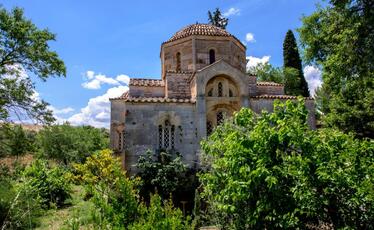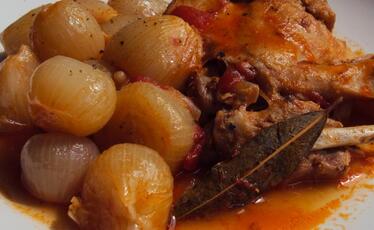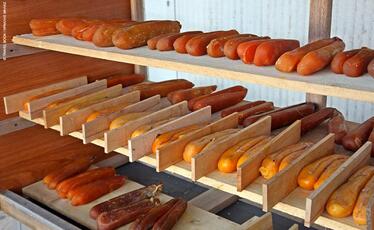On the western slope of mount Elikonas, opposite mount Parnassus, after the village of Steiri, at a distance of approximately 30km from Livadeia, is the famous Monastery of Osios Loukas (St Luke), the largest and best preserved monastery complex of the Middle Byzantine Period, with exceptional architecture and excellent decoration of mosaics, wall paintings and sculptures. With the Nea Moni of Chios and the Monastery of Daphni, the monastery of Osios Loukas is included in the list of world heritage monuments of UNESCO.
The foundation of the monastery is related with the presence of the local Osios Loukas, who was an ascetic here in the last years of his life, from 946/7 to 953. He was a gifted man, who made miracles and had the gift of prophesy. As a matter of fact he had prophesized the recapture by the Byzantines of the Arab occupied Crete, which was accomplished by Nikephoros Phokas in 961. He maintained close relations to the generals of the Theme of Greece, with Thebes as its capital, and one of them, Krenites, in 946, started to build in the area the church of Agia Varvara, which today is identified with the crypt on which they later built the catholicon. The completion and its decoration took place in 955, just after the saint’s death, by the monks, who also turned his cell into a cross-shaped church building and organized the monastery community.
After the Byzantine re-captured Crete, in 961, they erected the second church, of Virgin Mary, a very expensive project and of triumphant character, which is attributed to emperor Romanos II and is related to the prophesy of the Osios. The catholicon was built over the crypt in the beginning of the 11th century and was completed when Philotheos was abbot, approximately in 1011, when the translation of the saint’s relics took place from its initial grave, at his cell, to the present day location. During the Venetian Occupation, after 1204, Latin monks settled to the monastery, while during the Turkish occupation it returned to Orthodox hands and buildings were repaired and expanded. The monastery played a significant role during the liberation struggle in 1821.
The two magnificent churches, united between them, dominate at the centre of the monastery complex. The smaller one, the northern one, dedicated to Virgin Mary, dates from the 10th century and belongs to the type of complex cross-in-square church with a dome that is supported by four columns. On its western side there is a two-columned narthex, “liti”, which is presented here for the first time. Impressive is the rich, external ceramic decoration with the cufic elements (letters of Arab origin) and the marble dome. At its interior, the marble screen is one of the most important examples of the art of the 10th century, while at the diaconicon survive a few wall paintings from the 12th century.
The catholicon, the southern larger church, is a two-storey one and belongs to the architectural type of the so-called “continental” octagonal, cross-in-square church, which is applied here for the first time. It consists of the main church, where the tripartite bema has been annexed on the east and two narthexes on the west, from which the exonarthex was a later addition, in the 12th century, but it was demolished. A characteristic of this architectural type is that the eight pillars which support the dome towards the side creating a unified space inside the main church. On the sides of the central part of the church there are chapels. The mosaic decoration of the church is one of the most important surviving examples. Its larger part survives, except from the dome that has been destroyed in 1593 and its mosaics have been replaced with wall paintings, possibly in the end of the 17th century. With wall paintings of the 11th century are decorated the chapels and the crypt, while the wall painting of Joshua, which is next to the tomb of the osios, dates from the 10th century. Impressive is also the marble revetment that survives on the lower parts of the walls. At the point where the catholicon reaches the second church, at a specially shaped area, is the saint’s relics that attract a lot of pilgrims.
The complex also includes a lot of auxiliary areas and cells, which were constructed in different periods, and the restored refectory which hosts a sculpture museum.
It is a men’s monastery and it celebrates on the 7th of February, while celebrations are carried out on the Sunday of the Forefathers and on the 15th of August.
Informations
Additional
Date:
11th century
Season:
Byzantine
Celebrates:
7 February, 15 August
Holy Metropolis:
Thebes and Levadia
Under the Supervision of:
EFA Boeotia
Address:
Steiri 32100
Access:
Car, bus (after consultation)
Parking:
Free
Schedule:
Daily Summer months: 10.00-17.00 (open until 18.00)
Winter months: 9.00-16.00




